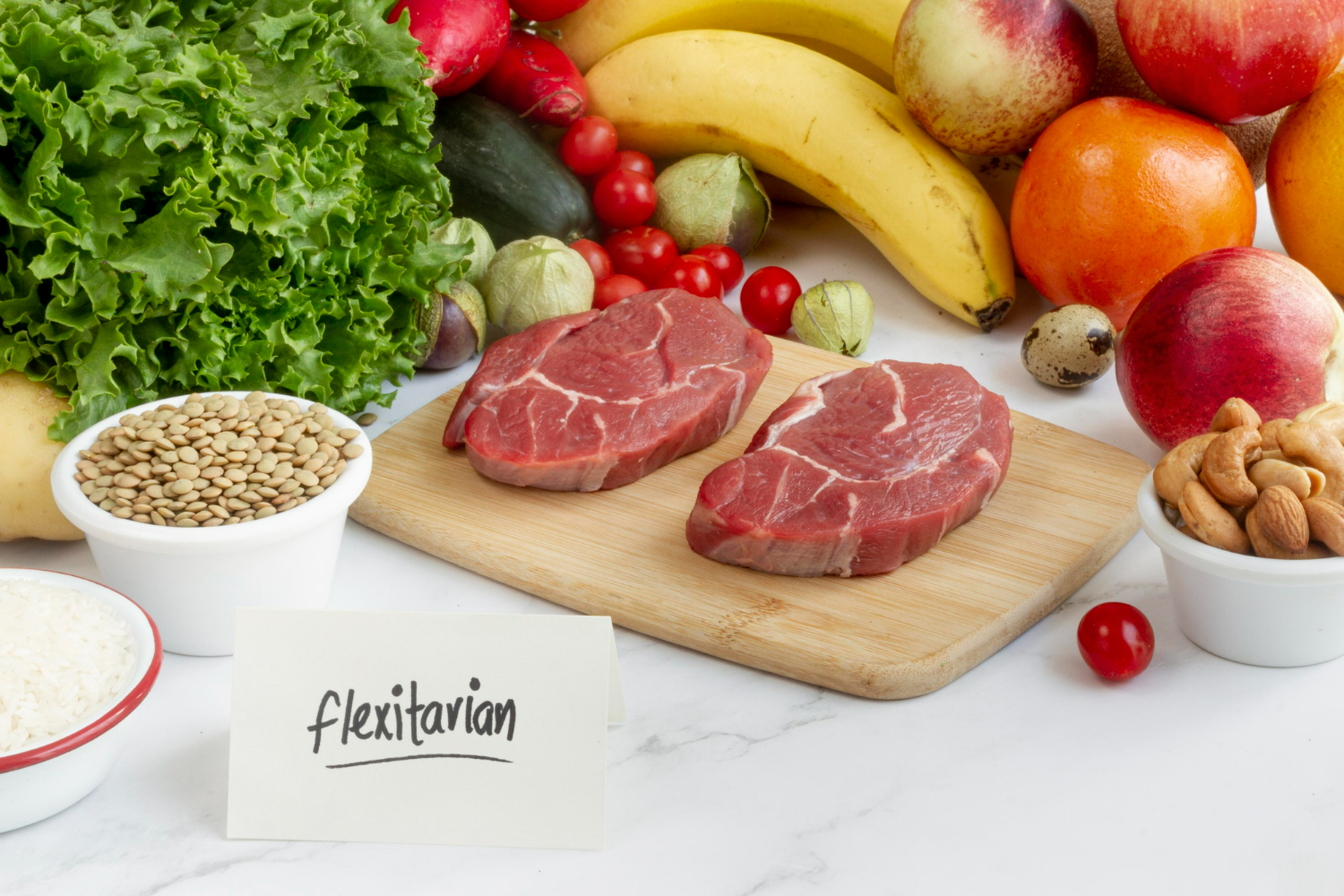Introduction
The Flexitarian Diet, a term derived from the fusion of “flexible” and “vegetarian,” has gained prominence as a sustainable approach to eating that bridges the gap between plant-based and omnivorous habits. In understanding this culinary philosophy, we delve into its origins and the inherent balance it advocates.
Principles of the Flexitarian Diet
Gradual Transition to Plant-Based Foods
Flexitarianism encourages a gradual shift towards plant-centric eating. This involves incorporating more fruits, vegetables, legumes, and whole grains into your diet. The aim is not abrupt elimination but a mindful integration of plant-based choices.
Mindful Inclusion of Animal Products
The flexibility of the flexitarian diet allows for the occasional inclusion of animal products. This deliberate and conscious approach sets it apart, emphasizing the importance of quality over quantity when incorporating meat, dairy, or other animal-derived foods.
Benefits of Flexitarianism
Improved Nutrient Diversity
Flexitarians often enjoy a broader spectrum of nutrients due to their diverse food choices. By including a variety of plant-based and animal-derived foods, individuals can enhance their intake of essential vitamins, minerals, and antioxidants.
Positive Environmental Impact
One of the commendable aspects of the flexitarian lifestyle is its positive environmental footprint. By reducing the reliance on animal agriculture, flexitarians contribute to lower greenhouse gas emissions and promote sustainable food practices.
Sustainable and Realistic Approach to Eating
Flexitarianism is not a rigid set of rules but a flexible framework that aligns with real-life scenarios. This adaptability makes it an accessible and sustainable choice for individuals seeking a balance between health, ethical considerations, and personal preferences.
Flexitarianism and Weight Management
Balancing Macronutrients for Optimal Health
A key aspect of the flexitarian diet is the emphasis on balanced macronutrients. The combination of plant-based proteins, healthy fats, and whole carbohydrates supports optimal health, providing sustained energy and aiding in weight management.
Supporting Long-term Weight Loss Goals
Flexitarianism promotes a lifestyle rather than a temporary fix. By incorporating whole foods and maintaining a mindful balance, individuals are more likely to achieve and sustain their weight loss goals over the long term.
Key Components of a Flexitarian Meal
Plant-Based Proteins
Flexitarian meals often center around plant-based protein sources such as beans, lentils, tofu, and quinoa. These alternatives not only offer a protein boost but also contribute to the overall nutrient density of the meal.
Abundant Fruits and Vegetables
Fruits and vegetables take the spotlight in a flexitarian diet, providing a rich array of vitamins, minerals, and fiber. These colorful components not only enhance the visual appeal of meals but also contribute to overall health.
Smart Inclusion of Animal Products
When incorporating animal products, the focus is on quality and moderation. Opting for lean proteins and sustainably sourced dairy ensures that the inclusion aligns with health and ethical considerations.
Meal Planning for Flexitarians
Weekly Planning for Variety
Successful flexitarian meal planning involves thinking beyond daily choices. Planning meals for the week allows for a diverse range of ingredients and ensures a well-rounded nutritional profile.
Incorporating Flexitarian Principles in Daily Life
Flexitarianism is not just a diet; it’s a way of life. Incorporating its principles into daily living involves mindful grocery shopping, exploring new recipes, and embracing the joy of discovering delicious and nutritious food combinations.
Overcoming Challenges
Addressing Social Situations
Flexitarians may encounter social situations where their dietary choices differ from the norm. Strategies for navigating these scenarios involve open communication, offering to bring a dish, and focusing on the shared enjoyment of food.
Navigating Dining Out as a Flexitarian
Dining out as a flexitarian requires a discerning eye on the menu. Choosing restaurants with diverse options, customizing meals, and exploring plant-based or vegetarian offerings ensure an enjoyable dining experience.
Flexitarian Recipes
Creative Plant-Based Dishes
Explore the culinary creativity of flexitarianism with plant-based recipes like stuffed bell peppers with quinoa and black beans or a colorful vegetable stir-fry. These dishes showcase the variety and flavor that plant-centric meals can offer.
Balanced Omnivorous Meals
For those moments when animal products are on the menu, experiment with balanced and flavorful recipes. Grilled chicken with a side of roasted vegetables or a salmon salad highlights the versatility of flexitarian choices.
Critiques and Controversies
Addressing Common Misconceptions
Misconceptions surrounding the flexitarian diet are not uncommon. Clarifying that flexitarianism is not about deprivation or strict rules but about mindful choices helps dispel myths.
Debunking Myths Surrounding Flexitarianism
Challenging preconceived notions, such as the belief that a flexitarian diet lacks protein or is too restrictive, is essential. Evidence-based information can help individuals make informed decisions about adopting this lifestyle.
Tips for a Successful Flexitarian Lifestyle
Gradual Transitions and Small Changes
Embarking on a flexitarian journey doesn’t require an overnight overhaul. Gradual transitions and small changes make the process more manageable and sustainable.
Listen to Your Body and Adjust Accordingly
Flexitarianism encourages tuning in to your body’s signals. Paying attention to how different foods make you feel allows for personalized adjustments, ensuring that your diet aligns with your unique needs and preferences.
In embracing the Flexitarian Diet, individuals find a harmonious balance between plant-based and omnivorous eating, fostering a sustainable and health-conscious approach to nutrition. Whether you’re exploring this culinary path for ethical, environmental, or health reasons, the flexitarian lifestyle offers a flexible and enjoyable way to nourish both body and conscience.




















